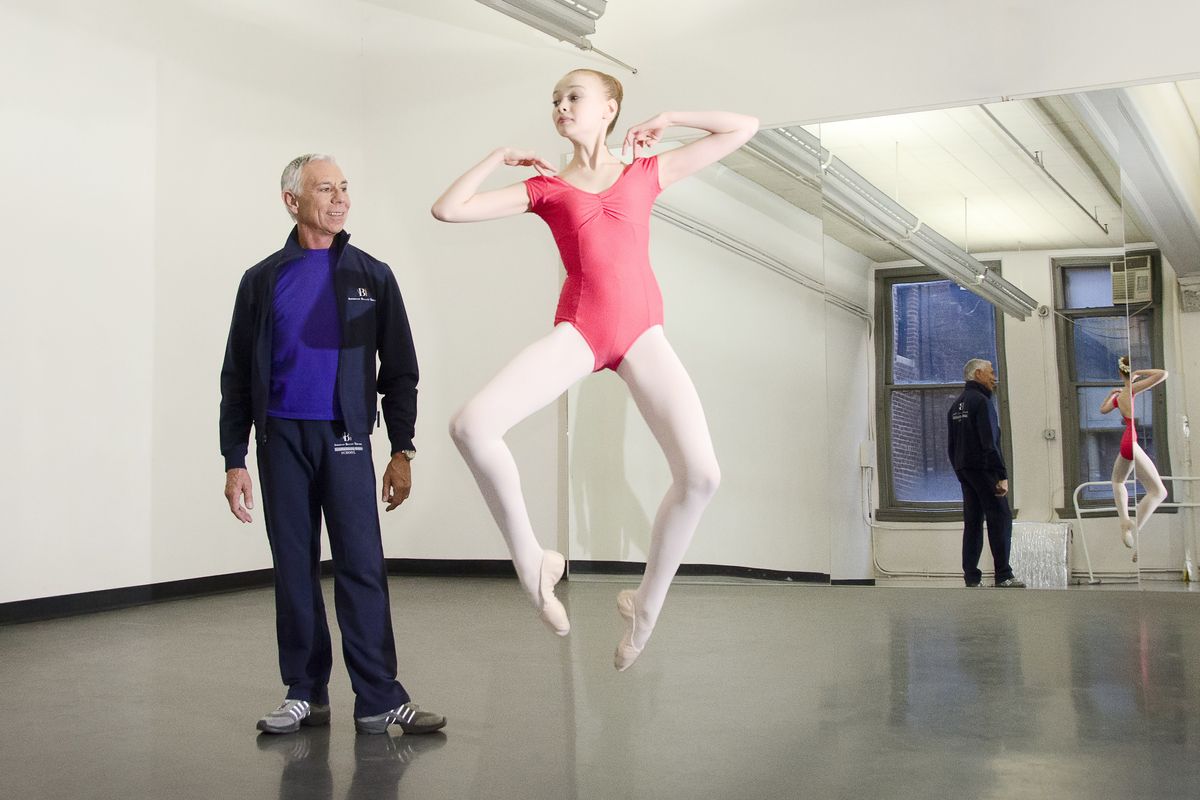
Grace Holmes, director of Kansas City Ballet School, doesn’t incorporate gargouillade into her class very often. “I usually teach it as a trick fun step, a dessert or treat for the kids,” she says. The uncommon ballet step (gargouillade means “rumbling” or “bubbling” in French) requires intricate footwork mid-jump: a small pas de chat with both feet doing double rond de jambe en l’air. Traditionally a step for women, gargouillade is usually part of a petit allégro combination or a fast variation. When it’s done well, it can be a flashy step that surprises audiences and highlights a dancer’s combined mastery of articulation, speed, coordination and ballon.
Start With Circles
Gargouillade usually starts with a double rond de jambe en dehors with the first leg, followed by a double rond de jambe en dedans with the second leg. Some teachers accept singles, or both legs moving en dehors, since these approaches might be slightly easier to coordinate. Most importantly, dancers should try to show circular movements. The roundness of the quick rond de jambe is a central component and one of the hardest skills to achieve.
Working on rond de jambe at barre will prepare dancers to do the jump in center. “With one hand on the barre, you can give small, low rond de jambe en l’air,” says Kay Mazzo, co-chairman of faculty at The School of American Ballet. “Make them do it faster and faster, which will then become the right feeling for gargouillade.”
To reduce the risk of floppy feet, have students start with single ronds de jambe and build up to doing doubles. “If you work on doubles from the start, the dancers think about just shaking their legs,” says Holmes. “They haven’t learned the circularity of the movement.”
Break It Down
Holmes starts by having students draw circles on the floor with their toes. “In center, they fondu on the right foot and coupé back with the left,” she says. After stepping on the left, “they brush and circle the right foot on the floor, transfer over to it, then circle with the other foot and land in fifth.” Holmes gives the sequence faster and faster, but still on the floor. Then she gives it again as a jump. Students should think about drawing circles on the floor even when they’re in the air, says Holmes. “The feet don’t flap, because they’re stretching downward with their toes.”
Sarah Hairston, director of academy training at Cincinnati Ballet, has students face the barre and brush the right foot off the floor, doing a rond de jambe en l’air sauté. “Depending on their strength, I start with a single and work up to double en dehors,” she says. “I do this many times until I see that it’s been mastered. Then I move forward to glissade-double-en-dedans with the left foot.” Hairston encourages students to show two legs open in second position while doing glissade, in preparation for gargouillade.
Find the Suspension
Students might find it difficult to get their hips in the air while trying to coordinate the feet. “The suspension catches my eye,” says Holmes. “That’s what I think is the most important aspect of it: suspension with isolation.” She suggests teaching gargouillade with the arms moving through high fifth, since the process of moving the arms up will help lift the hips off the ground. “Doing it with the arms up might also help control the arms, because they can’t flap them in high fifth like they can in second,” she says. To help students experience the buoyancy of the jump, Hairston asks the boys to help by lifting the girls while they practice gargouillade in center. The girls feel the height they need in order to execute the jump properly.
“It’s a really tough step, and students should only start learning it when they have a good idea how to do a rond de jambe en l’air,” says Mazzo. “Around 14 or 15 years old, they start getting the idea of what is expected. Then they see that it’s going to take all of their life to work at it.”
Ideas for Gargouillade Practice in Center
- To prepare for gargouillade, Kay Mazzo, co-chair of the faculty at The School of American Ballet, suggests a tombé croisé on the right foot, then step on the back left foot. “Then give pas de chat to the right,” she says. Repeat, but with rond de jambe during the pas de chat (a gargouillade!).
- Glissade, jeté, coupé, gargouillade. “That’s how I would get into it,” says Grace Holmes, director of Kansas City Ballet School. “Then I can do myriad things after that sequence.”




